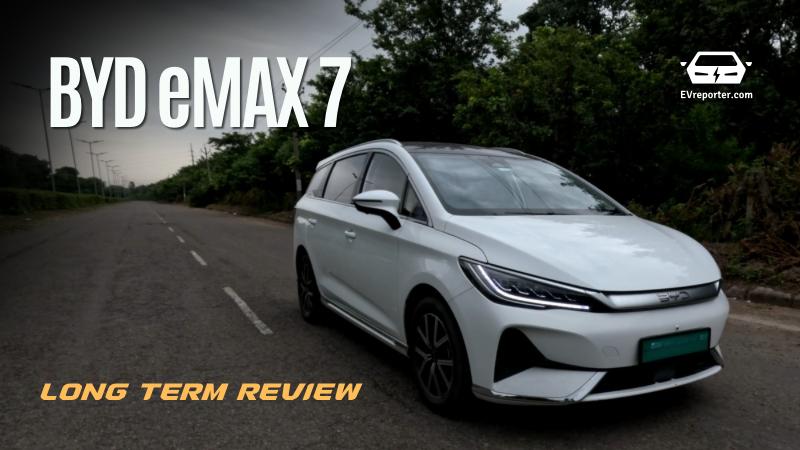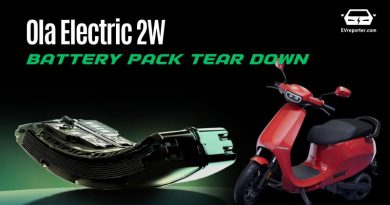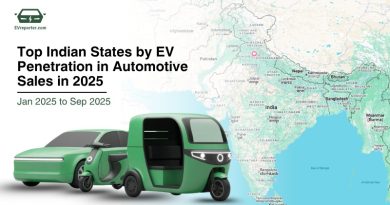BYD eMAX 7 | Long-term Review
Review by Akshay Aggarwal from EVreporter, based on his experience of driving the top variant of BYD eMax 7 for 16,000 kilometers over 6 months.
This vehicle that we are reviewing today evokes a very mixed emotion from a lot of us in India. A little bit of respect, urge to boycott, but also a slight desire to experience it. If you ask me, I think we ought to objectively study it and try to understand, how, inspite of being imported as a Completely Built Up unit from China, which significantly inflates its price by several lakhs of rupees, BYD is able to offer such a dependable car at a good price point of ₹29.90 lakhs ex showroom for the top variant.
Let me explain. When do we consider a car, particularly an EV to be dependable? 2 factors – First, when the claimed range is not worlds apart from the real world range, as is usually the case with most of our Indian EVs, and second, when you know that the car is not going to ditch you by throwing up a technical error without any prior symptoms, again a rarity in most of the EVs currently on roads. Unwanted surprises like some or the other sensor going haywire often leave the users stranded and grinding their teeth.
In times like these when many are wanting to believe in EVs, but are having a hard time doing so, the eMAX 7 by BYD is one vehicle which has the potential to single handedly drive up customer confidence in EVs. Unfortunately though, that might not be happening right now because eMAX 7 has not been promoted much by BYD, and has been receiving a lot less media coverage than other EVs in the market. Most of the awareness is spreading through word of mouth from the vehicle’s owners, but then that number is not very large either. Hence, the inspiration for this review.
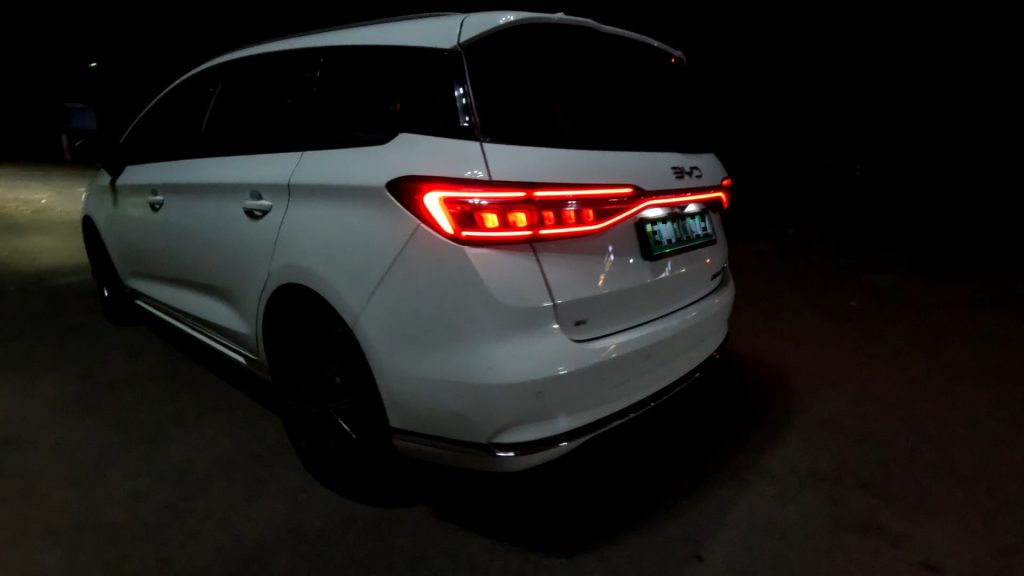
The vehicle is priced aggressively, so much so, that it is also being touted as the Innova killer. A 7 seater MPV with a real world range of 450 kilometers with a running cost of around 1.2 rupees per kilometer, I would say that it definitely can be called an Innova Crysta slayer, but not an Innova Hycross killer. Toyota has morphed the Innova into something else with the Hycross, and BYD would need to come up with a monster of an EV to compete with it.
Now the eMAX 7 isn’t a completely new vehicle. It is an upgraded version of its predecessor, the e6. While e6 was mainly a people mover, used mainly in corporate transportation services and EV passenger fleets, the eMAX 7 has been consciously designed as a personal car, with more stylised looks, more features, and significantly upgraded power. The motor used in e6 was a 71 kW one, while in eMAX 7 it has been more than doubled to 150 kW, which provides an output power of more than 200 bhp. This is quite evident when you drive the car and press the pedal hard. At a traffic signal, no one would imagine that such an MPV-looking vehicle can zoom out of sight so quickly. In fact, the burst of power is so intense, you feel underprepared to handle so much energy the first couple of times you experience it.
Design
The vehicle has an unimpressive stance; it seems disproportionately light from the front and bulky from the rear. The side view from the front is quite better. However, if you compare it with its predecessor e6, it looks much more fashionable. Inspite of being an MPV, it has a sporty feel to it due to its aerodynamic design accentuated by contour lines running along the body and elements like dragon face front look, attractive black and dark silver alloys, crystal floating LED headlamps and a Tesla like full sized panoramic dark glass sunroof.
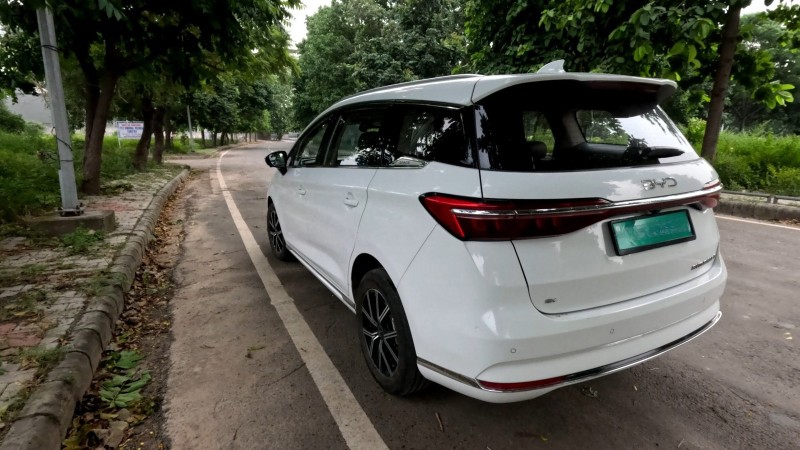
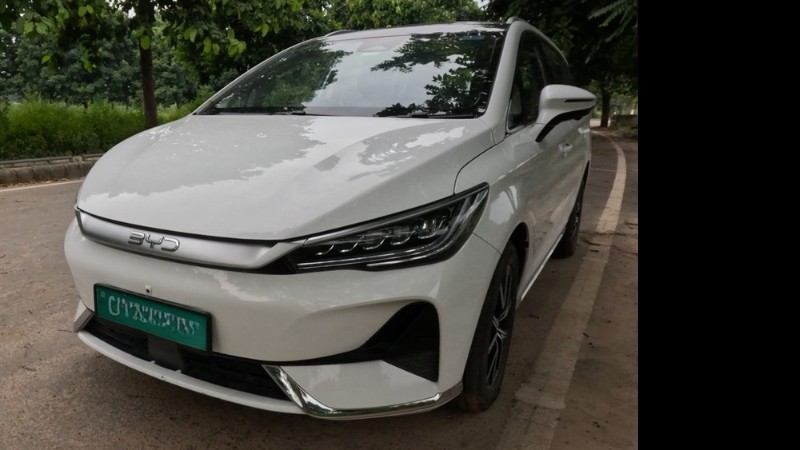
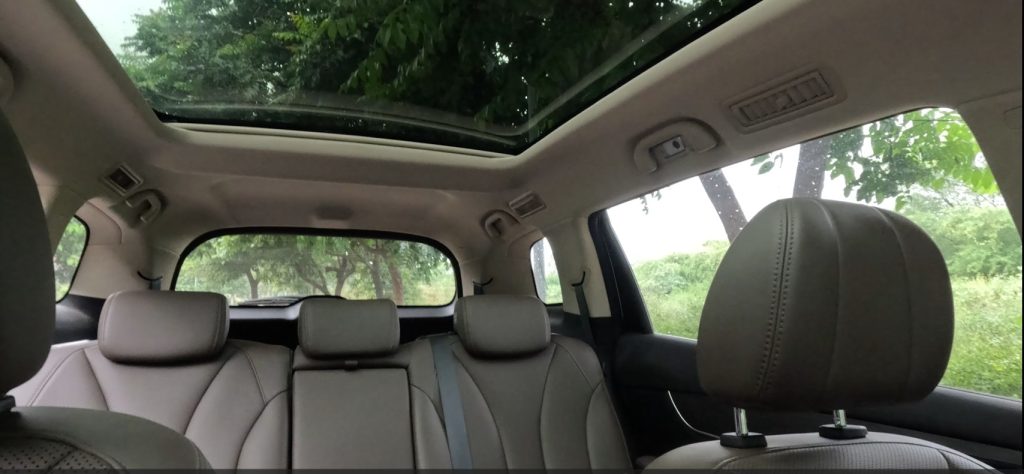
Interior & Comfort
You walk into the vehicle and the vehicle automatically switches on, the AC starts at the same setting at which it was last left, and similarly the regen mode and the drive mode also resumes from where you’d left it. Similarly when you walk out of the vehicle, even if you forgot to switch it off, its ok. Because when you lock the vehicle using the key, everything in the car switches off automatically.


Inside the car, apart from the textured plastic material used in the dashboard, which looks cheap, everything else looks premium. The gear knob is very stylish and quite easy to use. The slight feedback when shifting the gears or when using any of the one-click window buttons is very premium. The cushioned soft touch armrest and the leather wrapped steering wheel also feel very good to touch. However, the standout is the big screen in the centre of the dashboard, which is glossy but crystal clear. It also rotates at the touch of a button in a cool manner, a feature I think will be rarely used. One problem that I face with most of the other vehicles is the wireless apple carplay connectivity, but in BYD eMAX 7 , it is quite smooth, and once you figure out how to do it, it never irritates you again. The enormity of the screen kicks in when you start the navigation, with a gigantic map on the display. However the most amazing feature of the cockpit is the 360 degree camera. It’s not just a camera that gives you views from different angles, you can actually use the touchscreen to rotate the views in a matrix movie style fashion, even when the vehicle is driving. This feature lends a lot of oomph to the vehicle.

The front seats of the vehicle disappoint me slightly. I am a tall person and very finicky about car seat comfort, and the 6 way electrically adjustable driver or the 4 way adjustable passenger seats are just not high enough for me. Also the seat base stays flat, which means you don’t get that tucked in sporty feel while driving. However, my friends who are not quite tall didn’t find this to be a problem, and in fact one of them, who preferred having a straight sitting posture, actually liked eMAX 7’s seat position. So while it’s a matter of personal choice, I believe taller people might find it not very comfortable for very long drives. By the way this is the top variant of the vehicle with 7 seats, but there is also a slightly less costlier variant with captain seats.
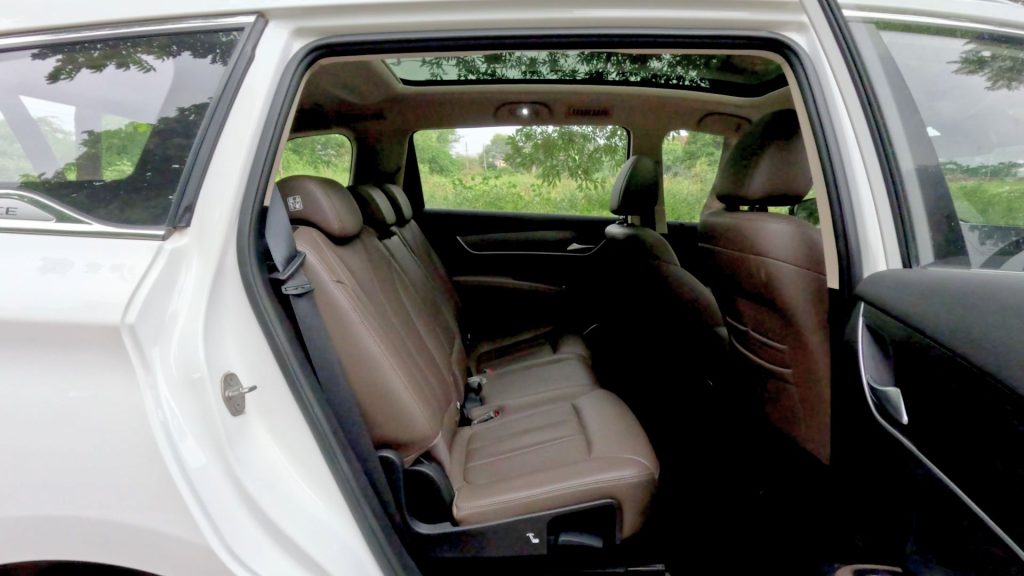
The build quality is surprisingly good, the doors are very heavy and hold in steps which is very useful when getting off the vehicle when it is parked at a ramp. There is ample legroom both in the front and the rear. The vehicle has an almost flat floor, and that ensures that the 3rd person sitting in the middle in the 2nd row is at ease too. There are AC vents till the 3rd row of the vehicle, and cooling is quite effective too, although it is very cumbersome to control the AC temperature, fan speed and flow direction from the touchscreen. I am not a big fan of stuffing all the controls in a touchscreen in the car, but that is becoming a norm nowadays, at least in the top variants of most of the vehicles. The 3rd row is good enough for kids, not for adults.
You get a lot of storage space in the vehicle if you fold the 3rd row of seats. Compared side by side, it looks as much as in an XUV 700, and that is lot, trust me. The windows, especially the rear ones are very wide. The vehicle gets a lot of daylight inside, and more so when you open up the curtain of that fixed glass panoramic sunroof.
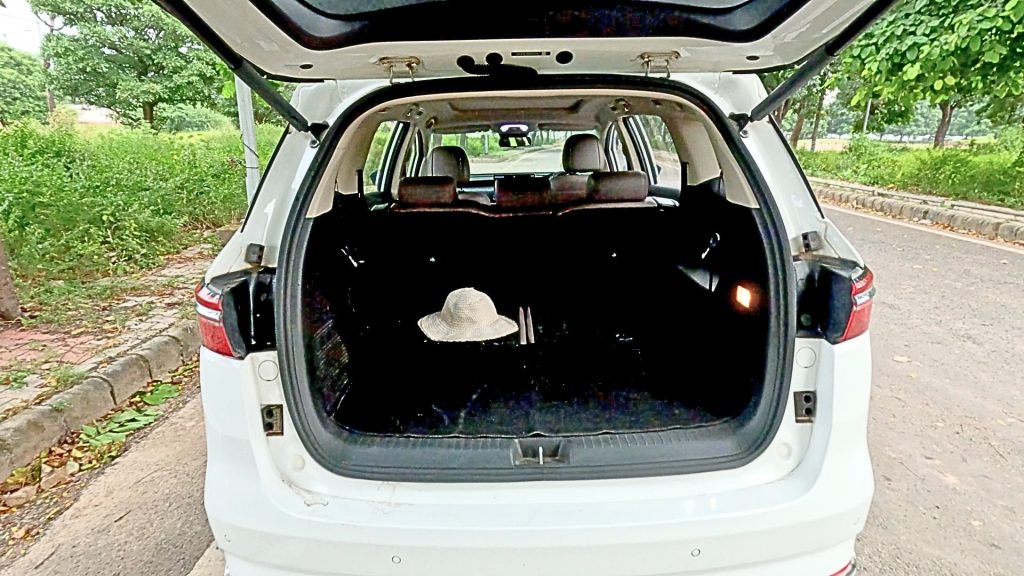
Driving experience
eMAX 7 is very sturdy, feels quite heavily built yet very sporty, and stays well grounded to the road. Out of the three driving modes, you don’t feel the urge to switch up from the eco mode. The low centre of gravity combined with a longer wheel base helps absorb most of the potholes, and the jerks travel to your body carrying a very diminished impact. At 170 mm when unladen, the road clearance is decent enough too, although it doesn’t seem so by the looks from outside. I have hardly had any incidence of the vehicle underbody scraping any speed breakers in city drive.
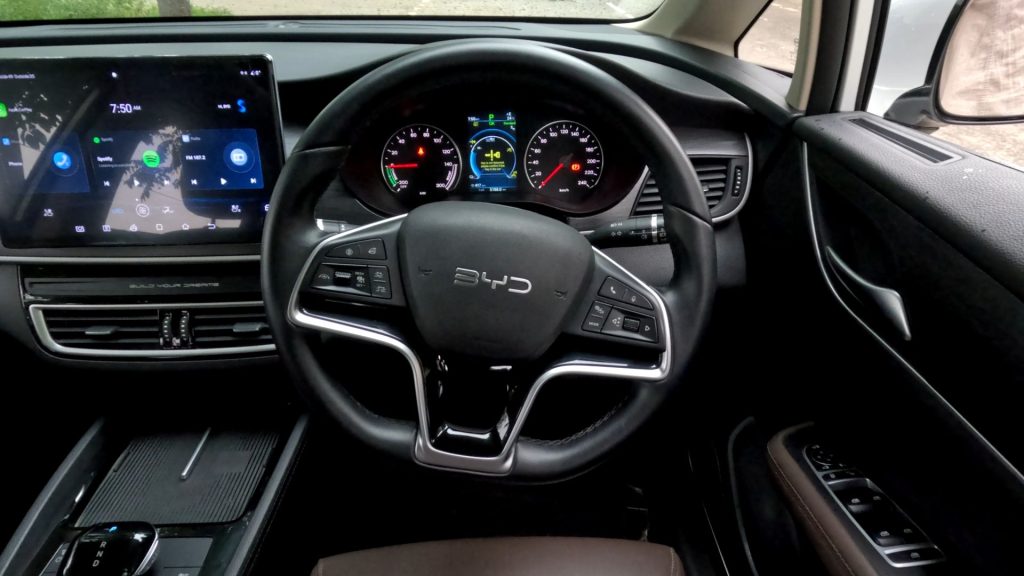
The vehicle responds beautifully to steering manoeuvres, the pick up is literally on demand, but be careful what you ask for, because when you really press the pedal hard, the vehicle becomes slightly uncontrollable unless you are driving in a straight line without any steering movements.
There is very little to complain about the driveability of this vehicle. In fact, it surpassed my expectations on almost every front.
The cameras on all sides are crystal clear and very helpful. There is no lag in the camera, meaning that there is reduced possibility of you hitting something first and then realising that the camera was slow to catch up, a problem in several cars.
I did experience an issue with the rear camera though while reversing. The guidelines are not very dependable. You trust those guidelines completely and you are bound to bang your vehicle while reverse parking in a tight spot. Apart from this sore point, the combination of parking sensors, high clarity cameras and an adjustable 360 vision is the best in class and is what you get in more premium cars.


There are other good to have features in the eMAX 7, like motorised and remotely openable boot trunk, portable credit like NFC key (apart from the 2 remote keys), wireless charging, ADAS with emergency braking and lane assist, keyless entry, button start, air filtration system, voice commands, wireless phone connectivity, intelligent automatic high beam control and a vehicle to load function that allows you to power your devices from the vehicle battery, like a party speaker or an electric grill to cook your meat and enjoy your trips, though you need to buy a separate adapter for all this.
Battery & Range
With a 71.8 kWh Lithium ion battery, BYD claims a range of 530 kms on a fully charged eMAX 7. However, whenever I switched on the vehicle after a full charge, it always showed up a remaining range of 480 kms. Then why does BYD claim 530 ? That probably because whenever I drove in a very gentlemanly manner, I got more juice from what was showing as remaining in terms of kilometers from the vehicle.

In a normal driving style, after having done more than 20 long drives over a period of several months, I consistently got an estimated range of 450 kilometers, and that includes driving with AC on at a comfortable temperature and also while driving on hilly terrains. That is very good I believe, for I had much less expectation of its real world range. BYD is known for its battery technology globally. In fact BYD had started off as a battery technology company initially and had later on moved into manufacturing vehicles themselves. BYD still supplies its renowned BLADE batteries to a lot of other automobile companies, including Mahindra for their XEV 9e and BE 6 vehicles. The warranty for the battery pack in eMax 7 is 8 years or 160,000 kilometers, whatever comes first. Now this doesn’t necessarily mean that the battery performance will dip significantly after 1.6 lakh kilometers, its just that BYD will not assure you of that. It is expected that the battery should retain at least 70 to 80% of its original range capacity after that, which is not bad.
Charging
BYD provides a free third party manufactured 7.2 kW home charger with the vehicle. The vehicle we are reviewing has a charger manufactured by a Chennai based company called Relux. To charge the vehicle, you have to just plug in the charging gun in the vehicle, and then switch on the charger. The battery’s state of charge continuously keeps on displaying on the vehicles screen, but not on the charger, at least not on the one we tested. The charger was compact, had BYD branding, and was simple and handy to use. Just ensure that you have sufficient electricity load available that you can dedicate to charge the eMAX 7 apart from running all the other appliances at night like your Air Conditioners etc, before you take delivery of the vehicle. Also pre-decide the place where you would want to hang the charger, as apart from the beautiful charger, there would be some thick ugly cables hanging around it. A 7.2 kW charger would need around 10 hours to fully charge the vehicle.
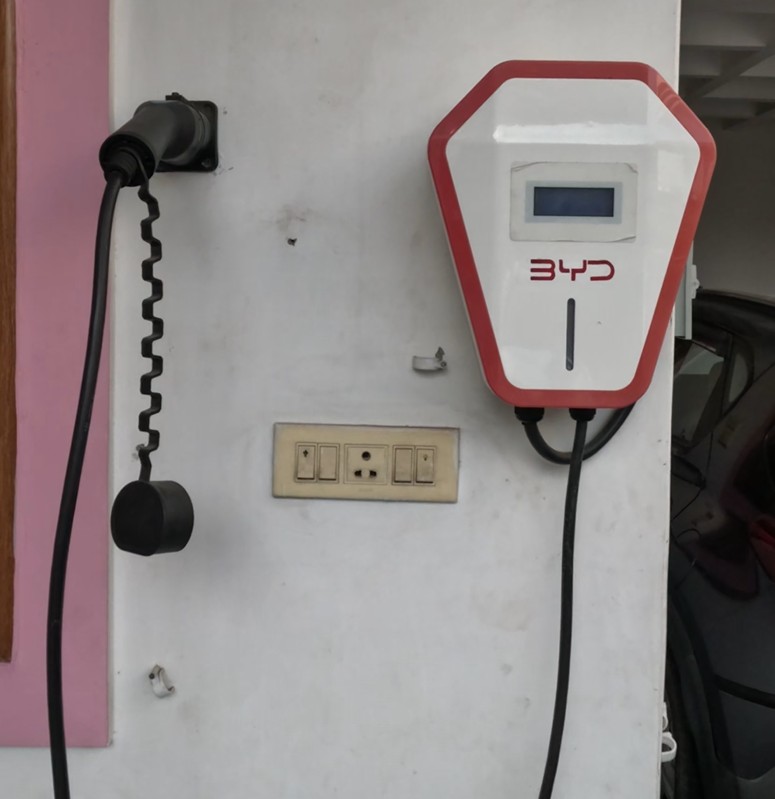
There is also an option to buy a portable 3.2 kW charger which would take double the time to charge the vehicle, but with so many public fast chargers available nowadays, I wouldn’t recommend buying one, unless you plan to travel to very remote destinations for road trips.
You can also fully fast charge the vehicle on public charging stations in 30 mins to 2 hours, depending upon how powerful the charger is.
Running Cost
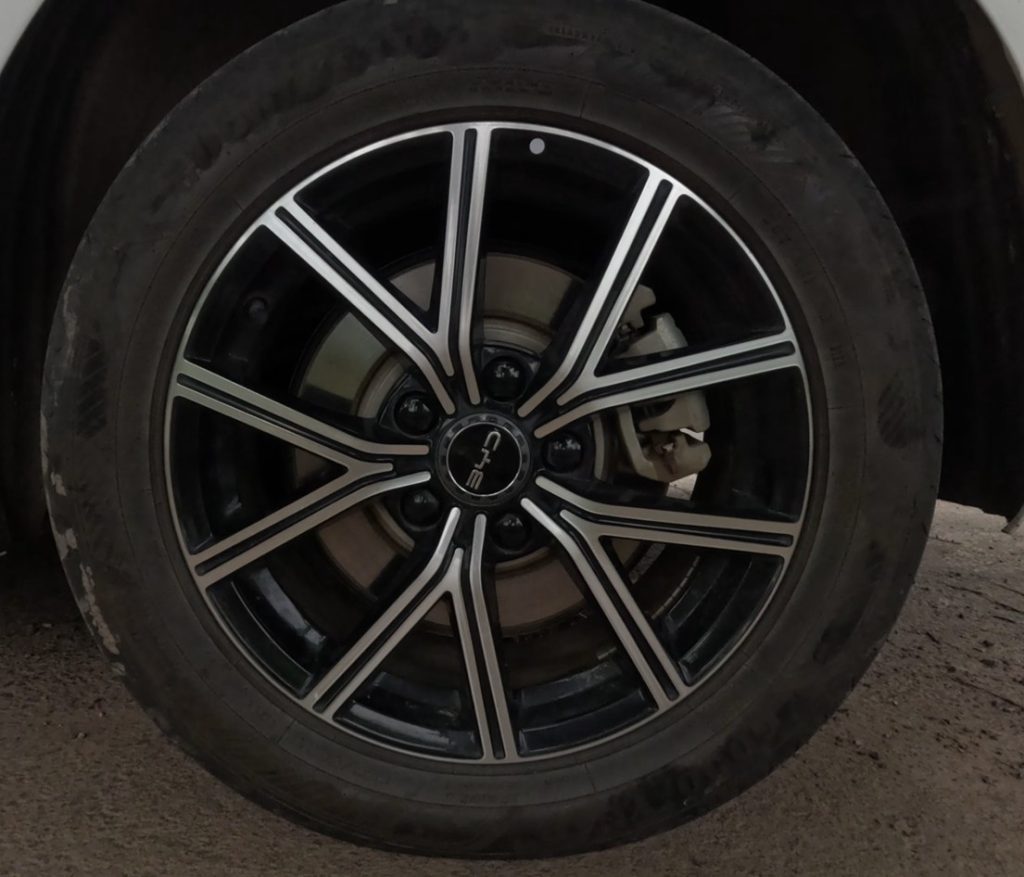
At Rs. 7 per unit, charging a 71.9 kWh battery costs around 500 Rupees, which translates to a running cost of around Rupees 1.2 per Kilometer, considering only the electricity cost. After the first free servicing, the recurring service visits happen at an interval of 20,000 kms, and those too don’t pinch the pocket, since there is no engine oil or fuel filter to be replaced. In fact, since there are 2 regenerative braking levels in eMAX 7, and in cities the larger regen mode is suggested, there is an automatic vehicle deceleration that in turn charges the battery whenever you release the accelerator pedal. This significantly reduces the usage of brakes, which means that brake pads would need much lesser replacements. Thus the overall maintenance cost of the vehicle is expected to be very low as compared to an ICE vehicle.
Final Verdict
Do I suggest this vehicle is worthy to be bought? The answer is a resounding yes, not because of its long list of features, not because of its performance, not even because of its price. And that brings us to our last point, again.
Reliability
I have tested eMAX 7 for thousands of kilometers in different road conditions over a period of several months, and not once has the vehicle ditched me. There has never been a single moment where the vehicle didn’t charge, the screen hung, some electronic component misfired, or even a single scenario where the vehicle’s range fell short of my expectation. In terms of reliability, the vehicle has performed bang on, and for these new age breed of EVs, that is what matters to me the most, and I believe should matter to you as well.
Thank you and see you again soon.
Also read: BYD’s ultra-fast charging technology
Subscribe & Stay Informed
Subscribe today for free and stay on top of latest developments in EV domain.
